# Post-processing in the Universal Render Pipeline
The Universal Render Pipeline (URP) includes an integrated implementation of [post-processing](https://docs.unity3d.com/Manual/PostProcessingOverview.html) effects. If you use URP, it's not necessary to install an extra package for post-processing effects. URP is not compatible with the [Post Processing Stack v2](https://docs.unity3d.com/Packages/com.unity.postprocessing@latest/index.html) package.
URP uses the [Volume](Volumes.md) framework for post-processing effects.
The images below show a Scene with and without URP post-processing.
Without post-processing:
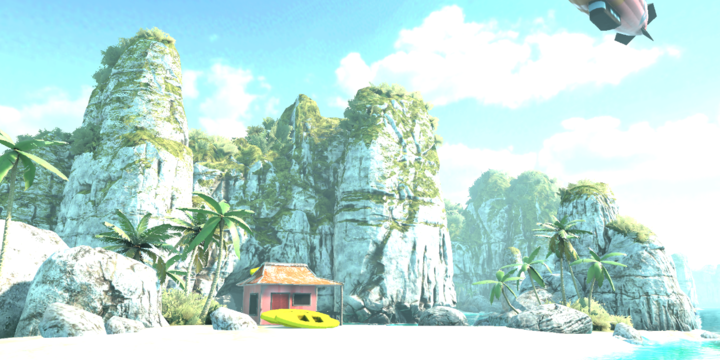
With post-processing:
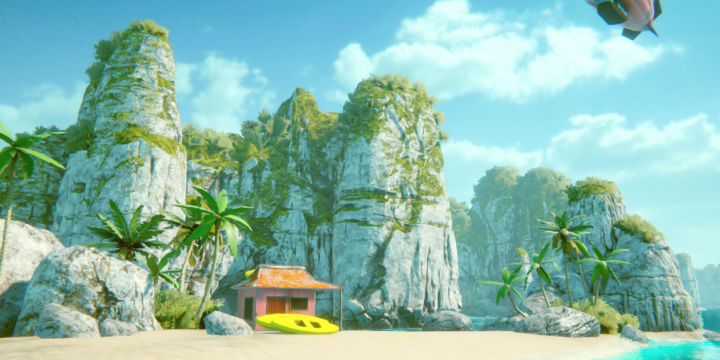
> **Note:** URP does not support Post-processing on OpenGL ES 2.0.
## How to configure post-processing effects in URP
This section describes how to configure Post-processing in URP.
### Using post-processing in the URP Template Scene
Post-processing is preconfigured in the SampleScene Scene in URP Template.
To see the preconfigured effects, select **Post-process Volume** in the Scene.
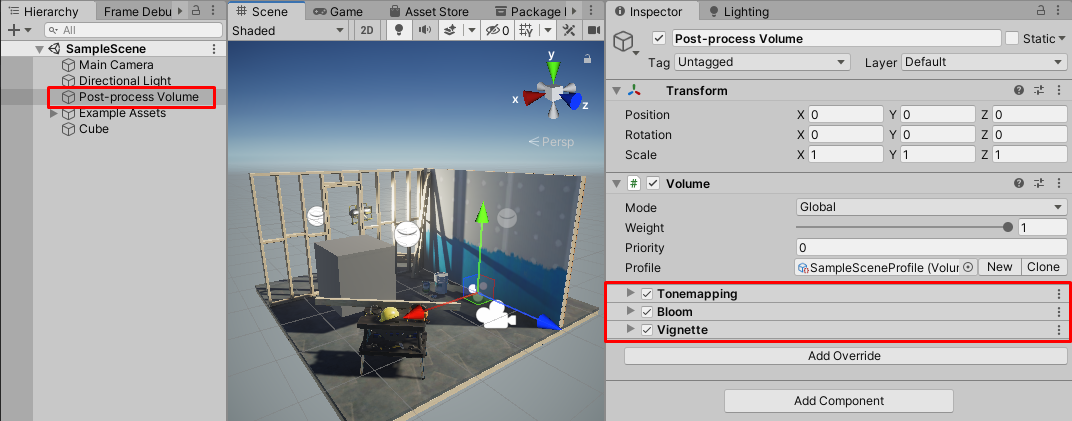
To add extra effects, [add Volume Overrides to the Volume](VolumeOverrides.md#volume-add-override).
To configure location-based post-processing effects, see [How to use Local Volumes](Volumes.md#volume-local).
### Configuring post-processing in a new URP Scene
To configure post-processing in a new Scene:
1. Select a Camera, and select the **Post Processing** check box.

2. Add a GameObject with a [Volume](Volumes.md) component in the Scene. This instruction adds a Global Volume. Select **GameObject > Volume > Global Volume**.
3. Select the **Global Volume** GameObject. In the Volume component, create a new Profile by clicking **New** button on the right side of the Profile property.

3. Add post-processing effects to the Camera by adding [Volume Overrides](VolumeOverrides.md#volume-add-override) to the Volume component.
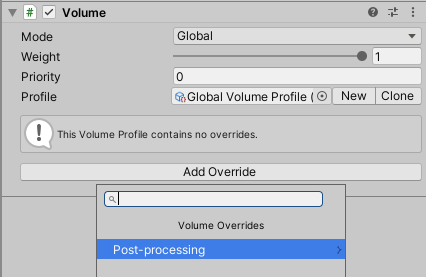
Now you can adjust post-processing effect settings in Overrides in the Volume component.
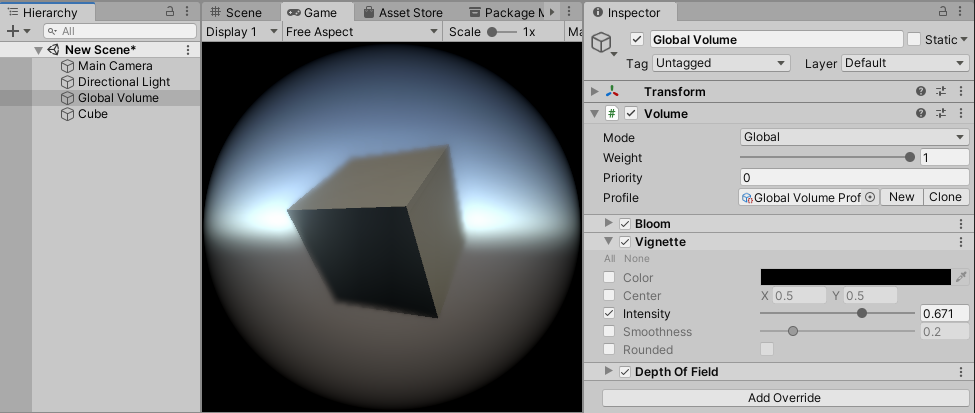
To configure location-based post-processing effects, see [How to use Local Volumes](Volumes.md#volume-local).
## Post-processing in URP for mobile devices
Post-processing effects can take up a lot of frame time. If you’re using URP for mobile devices, these effects are the most “mobile-friendly” by default:
- Bloom (with __High Quality Filtering__ disabled)
- Chromatic Aberration
- Color Grading
- Lens Distortion
- Vignette
**Note:** For depth-of field, Unity recommends that you use Gaussian Depth of Field for lower-end devices. For console and desktop platforms, use Bokeh Depth of Field.
**Note:** For anti-aliasing on mobile platforms, Unity recommends that you use FXAA.
## Post-processing in URP for VR
In VR apps and games, certain post-processing effects can cause nausea and disorientation. To reduce motion sickness in fast-paced or high-speed apps, use the Vignette effect for VR, and avoid the effects Lens Distortion, Chromatic Aberration, and Motion Blur for VR.